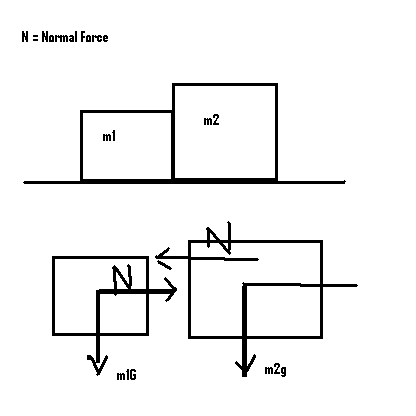Why won't two blocks kept in contact on a horizontal frictionless surface move, due to the normal force? No exterior force is applied to them from any direction (except for gravity).
Ok here's more info
Actually in our physics text there were numerical where two boxes of mass m1 and m2 are kept on frictionless surface and a force is applied to one of them and we have to calculate their acceleration(a = F/(m1+ m2)) and normal force(N = m2/(m1+m2) *F)
And my physics teacher also said that "whenever two bodies are in contact there always exist normal force"(exact words)
So I thought if no external force is applied horizontally or vertical upwards to such a system of blocks(here m1 and m2) on a frictionless surface then why they don't move?
And what is the max N for a system of blocks(for simplification lets take two blocks only) and can that max N overcome friction if kept on a surface with friction
I hope you guys understand my confusion here

